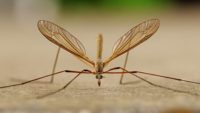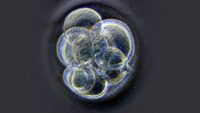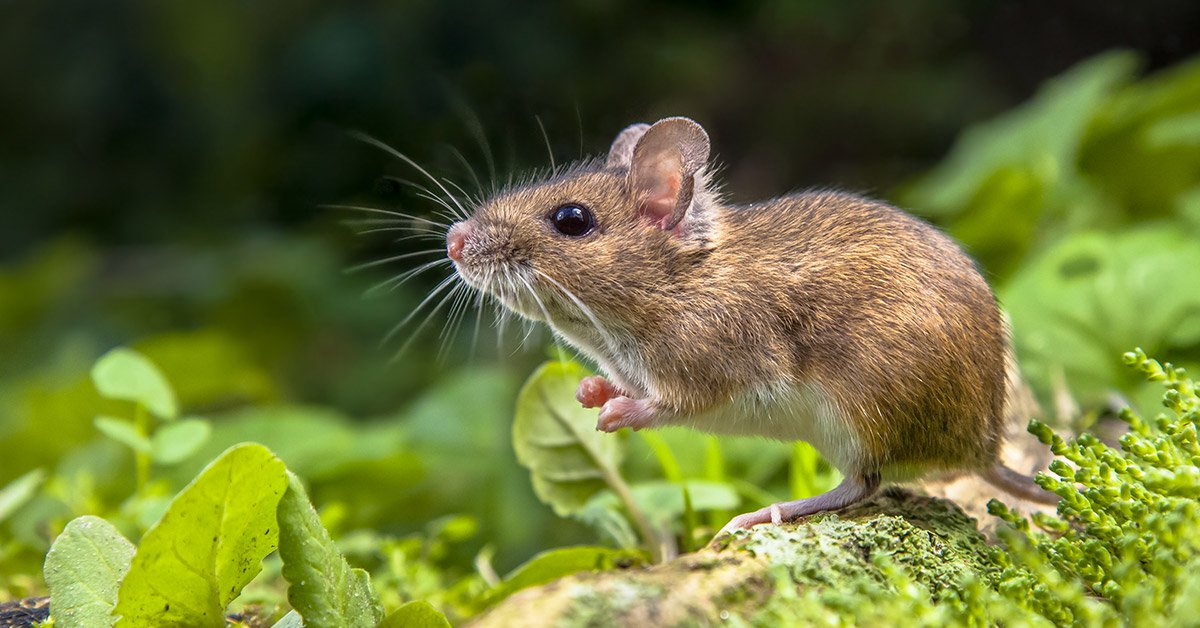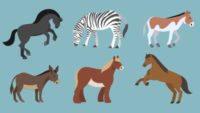Philippine snout weevil has brilliantly coloured spots. What causes them, and what can engineers learn? …read more Source: <a href=https://creation.com/a/13585 target=_blank title="Rainbow spot design challenges engineers” >creation.com
By Troy Lacey The biogeographic importance of log and vegetation mats is slowly gaining popularity, even in the mainstream scientific community. …read more Source: AIG Daily
Shaun Doyle …read more Source: creation.com
By Ken Ham Convergent evolution—it’s the convenient term used to describe similar features (often very complex ones such as echolocation or flight) that have supposedly arisen in organisms separated by vast ages of evolutionary distances (millions of years) due to similar environments or stressors. And the newest example of so-called “convergent evolution” is the eyes of crane flies and humans, as supposedly revealed by the fossil record. Scientists found that the insects trap light similarly to the way humans do, using the pigment melanin. Scientists discovered a cache of crane fly fossils, dated to be allegedly 54 million years old. [More]
Did Eve transition from a single bone to a 206-bone human? What about the transition from molecules to man? …read more Source: creation.com
An extra copy of a gene is new information, but not a new kind of information –; evolution still doesn’t happen! …read more Source: creation.com
By Ken Ham Headlines around the world announced that an international team of scientists working in China had created human-monkey chimeras. These “chimeras,” grown as embryos, have both human and monkey cells, and the goal is to grow organs able to be transplanted into humans waiting for an organ donor. This kind of research shows a complete and utter disregard for human life on a number of levels and crosses lines I don’t think should be crossed. Dr. Georgia Purdom, a molecular geneticist here at Answers in Genesis, sent me her thoughts on this troubling news item: When I first [More]
Unique structures in rare bacteria suggest the amazing process of photosynthesis is much “older” than evolutionists assumed. Photosynthesis is the process of turning sunlight, water and carbon dioxide into sugar and oxygen. There are two types. The first is anoxygenic photosynthesis that uses molecules other than water to drive the process and doesn’t produce oxygen as a byproduct. The second is More… …read more Source: icr.org
You have been designed with many trillions of cells. Within the nucleus of each cell (except for red blood cells) is the “molecule of life” called DNA. It’s organized into chromosomes (humans have 46) upon which many thousands of genes are found. Genes are hereditary units, comprised of nucleotide bases called T, G, C, and A. Each cell undergoes complex metabolic processes, or metabolism. Because we live in a fallen world,… More… …read more Source: icr.org
By Harry F. Sanders, III A recent article from Cell discusses the roundworm and its ability to transmit a learned trait from parent to offspring through four generations. …read more Source: AIG Daily
By Dr. Nathaniel T. Jeanson One of the keys to the origin of species is a concept that few have heard of—genetic drift—the simple application of statistics to basic genetics. …read more Source: AIG Daily
A recent Public Broadcasting Service (PBS) report highlighted creatures’ designed innate capacity to self-adjust to incredibly challenging exposures.1 The article, by Stuart Thompson who is a senior lecturer in plant biochemistry at the University of Westminster, describes plants thriving around the former Chernobyl nuclear reactor in spite of high doses of radiation. Though he claims the radiation-resistant mechanisms in p… More… …read more Source: icr.org
Stick insect research upsets one of evolutionists’ long-held beliefs …read more Source: creation.com
Loss of flight several times is not evolution, no new structures, no new genes. …read more Source: creation.com
By Dr. Don DeYoung What if we could design tape and adhesives that automatically cleaned themselves every time they got dirty or wet? …read more Source: AIG Daily
Scientific investigation supports the idea that we descend from an original couple. …read more Source: creation.com
Does the reviled coyote deserve its reputation? …read more Source: creation.com
By Dr. Alan L. Gillen Blood reveals much about the majesty of our Creator and Master Craftsman, irreducible complexity, and the health or disease state of the human body. …read more Source: AIG Daily
Transporting water up a tree ten stories high from the roots to the leaves is no easy feat. How is this accomplished? The answer lies in tiny, specially designed vessels called xylem—plus a combination of other factors. Scientists are getting closer to mimicking this amazing vertical passage of water for the purpose of future large-scale desalination and sewage treatment.1,2 Evolutionists give credit to th… More… …read more Source: icr.org
Despite capability of taking up new sugar, yeast species has not undergone evolution …read more Source: creation.com
By Michael By John Vibes For decades, scientists have known that trees communicate with one another through a network of underground fungi, which even allows them to trade nutrients back and forth. This… …read more Source: Natural Blaze
By Harry F. Sanders, III One of the problems inherent in the evolutionary dogma is going from a single-celled organism, once such a thing exists, to a multi-celled organism. …read more Source: AIG Daily
You might recall that viruses act as miniscule infectious agents. They forcibly enter a cell and conquer its molecular machinery. The cell is instructed, via viral DNA, to stop making its normal cellular parts and instead make more viruses by transcription and replication. As more and more viral parts are manufactured, the cell breaks apart—its wall rupturing in a process called lysis. Then newly-formed viruses are released a… More… …read more Source: icr.org
Steve Turpin, O.D., M.S., a Doctor of Optometry, wrote about an alarming increase in nearsightedness in developed societies on behalf of the Evolution Institute (EI). His conclusions actually contradict Darwinian evolution.1 In fact, everything Dr. Turpin writes would have nothing to do with evolution were it not for his evolutionary conception of human history. Turpin, like many evolutionists, equate the primitive human ancestors that… More… …read more Source: icr.org
Nobody saw her “billions of years of research and development”, yet ‘she’ is credited with nature’s marvels of engineering. Read More
By Troy Lacey Researchers studying mole-rats and the East African root rat discovered that several had pain insensitivity to different irritants (referred to as “algogens”). …read more Source: AIG Daily
By Harry F. Sanders, III A recent tweet asserted, “Evolution has been directly observed both in the lab and in the field. If you had done any research whatsoever, you would know this.” …read more Source: AIG Daily










































